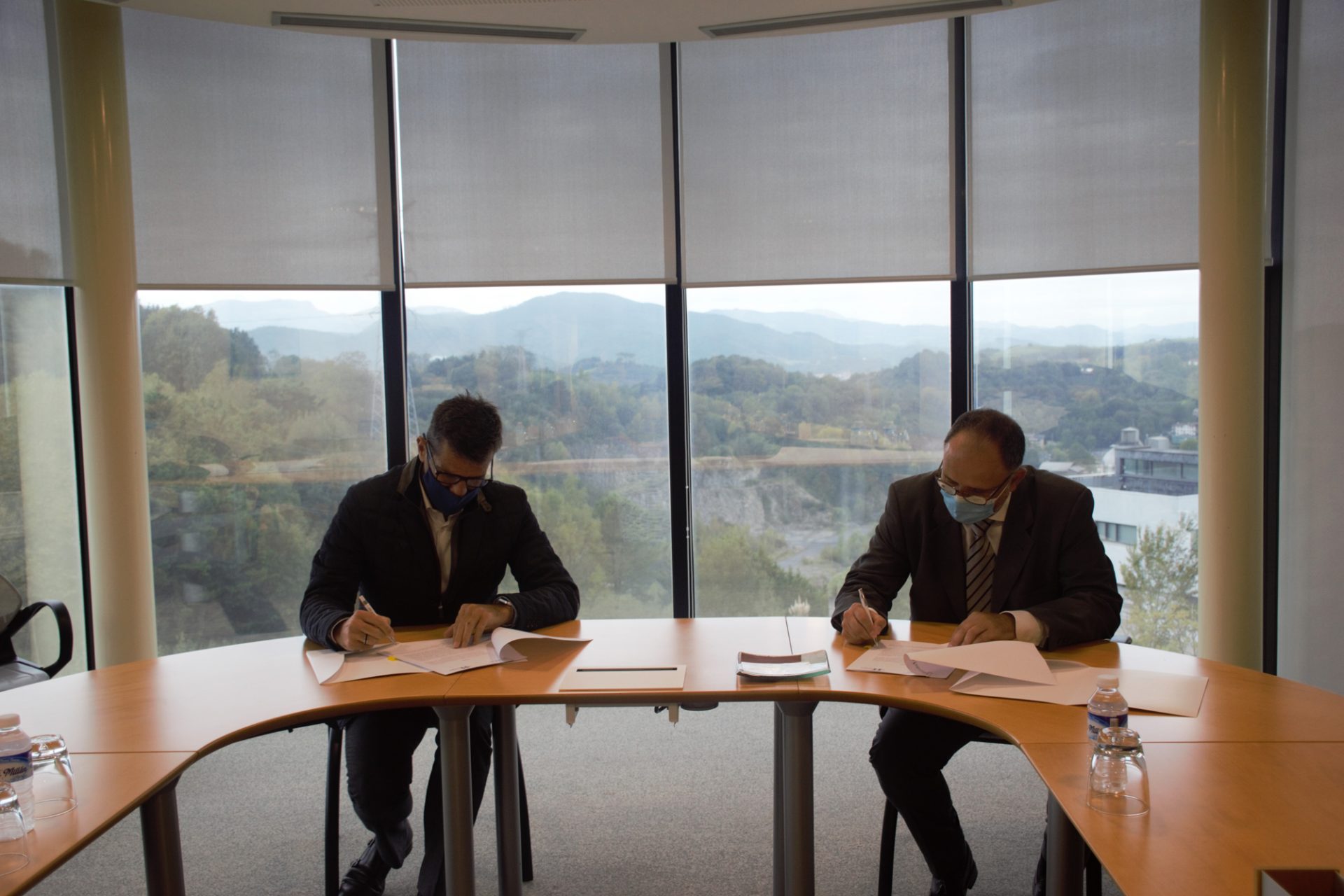- They currently collaborate in the development of innovative technologies for the use of “green” ammonia as large-scale energy storage for long periods of time.
- Clean hydrogen stands out as one of the essential areas to be addressed in the context of energy transition and is estimated that it could satisfy 24% of the world’s energy demand by 2050, with annual sales amounting to 630,000 million euros.
29 September 2020. Clean hydrogen is set to become one of the essential areas to address in the context of energy transition, as highlighted by the European Union. In fact, one of their reference documents, the “EU Hydrogen Strategy”, was published on 8 July 2020. This document recognises clean hydrogen as the energy source that could satisfy 24% of the world’s energy demand by 2050, with annual sales reaching 630,000 million euros. In this context, the Spanish Hydrogen Centre (CNH2) and the TECNALIA research and technological development centre have reached an agreement to develop new key technologies across the hydrogen value chain, which will promote the generation of clean hydrogen, the launch of new infrastructures for their transport and the impulse of new processes that can be used.
The collaboration has been signed this morning at TECNALIA’s facilities at the Science and Technology Park of San Sebastián, by Emilio Nieto, Director of CNH2, and Iñaki San Sebastián, CEO of TECNALIA. According to Emilio Nieto: “We are facing a magnificent opportunity for collaboration and this is the perfect time to join forces and reach strategic agreements that allow us to combine the skills of both organisations.” On the other hand, Iñaki San Sebastián considers that: “We are facing the need to help the industrial fabric to position it strategically within the framework of the new hydrogen economy. This agreement will allow us to accompany the companies in the achievement of this goal.”
This is a step further in the cooperation between both centres, which are working together in different research projects, such as the development of innovative technologies for the use of “green” ammonia as large-scale long-lasting energy storage, within the ARENHA European Project.
Green hydrogen, an essential element for energy transition
This agreement will make it possible to face the challenges associated with hydrogen, such as the generation of low-carbon or carbon-free hydrogen at a competitive cost, adapting the infrastructure to transport and distribute it from the generation point to the place of use and adapting the processes where hydrogen can be used, industrially and domestically. The achievement of these goals will allow to us reach the carbon neutrality commitments of the European Union for 2050 to obtain greater energy independence, compared to companies producing fossil fuels.
CNH2 and TECNALIA will work on the development of innovative solutions to improve generation processes, both conventional and related to green hydrogen. Today, hydrogen is generated fundamentally from fossil fuels and, in this case, the challenge is to reduce its emissions, using, for example, technologies that capture, store, and use carbon dioxide. Likewise, there is a great interest in the production of “green” hydrogen, which is generated by water electrolysis, using renewable energy sources: wind and solar.
Identifying and promoting new uses for hydrogen once generated is another one of the main goals of this collaboration, including powering future hydrogen vehicles by using hydrogen cells. The latest hydrogen car models have an autonomy of up to 700 kilometres and can be charged in just five minutes. By 2030, Spain plans to have 5,000 vehicles with these characteristics and a fleet of 150 buses. 100 “hydrogenerators” (the equivalent to today’s petrol stations) are being planned as infrastructure.
Lastly, the goal of our collaboration is to help our industrial fabric to improve its competitiveness, generating advanced technologies and services, which allow the generation of wealth and jobs in leading sectors.
About the Spanish Centre for Hydrogen (CNH2)
The Spanish Centre for Experimentation of Hydrogen Technologies and Fuel Cells (CNH2) is a national research centre aimed at promoting scientific and technological research on hydrogen technologies and fuel cells, serving the entire scientific, technological, and industrial community.
CNH2 was created in 2007 as a Public Consortium between the Ministry of Education and Science, currently the Ministry of Science, Innovation and Universities, and the Regional Board of Castilla La Mancha. Each of them participated with a 50% share, and its headquarters are located in Puertollano (Ciudad Real).
About TECNALIA
As part of the BRTA (Basque Research and Technology Alliance), TECNALIA is a benchmark Research and Technological Development Centre for Europe, with 1,400 professionals representing 30 different nationalities, focusing on transforming technology into GDP to improve people's quality of life, by creating business opportunities for companies. Its key areas of action are: Digital Transformation, Advanced Manufacturing, Energy Transition, Sustainable Mobility, Urban Ecosystem and Health.
It should be noted that Ekain Fernandez, TECNALIA researcher, has been chosen to be the coordinator of the Hydrogen Distribution Committee at the prestigious Hydrogen Europe Research. The research group of the main European association of this novel energy vector represents 160 industries, 83 research institutions, and 21 national associations.

